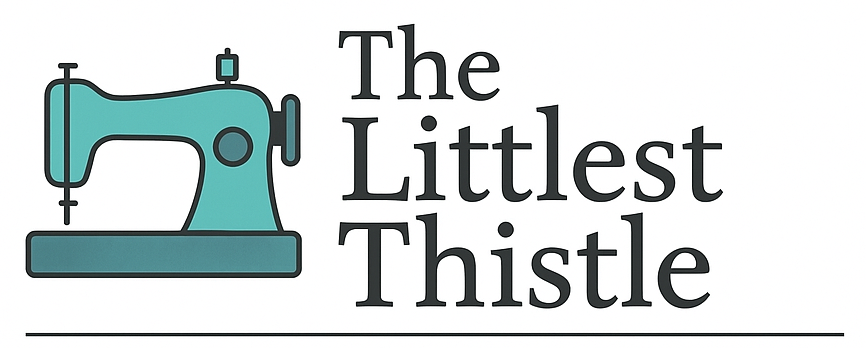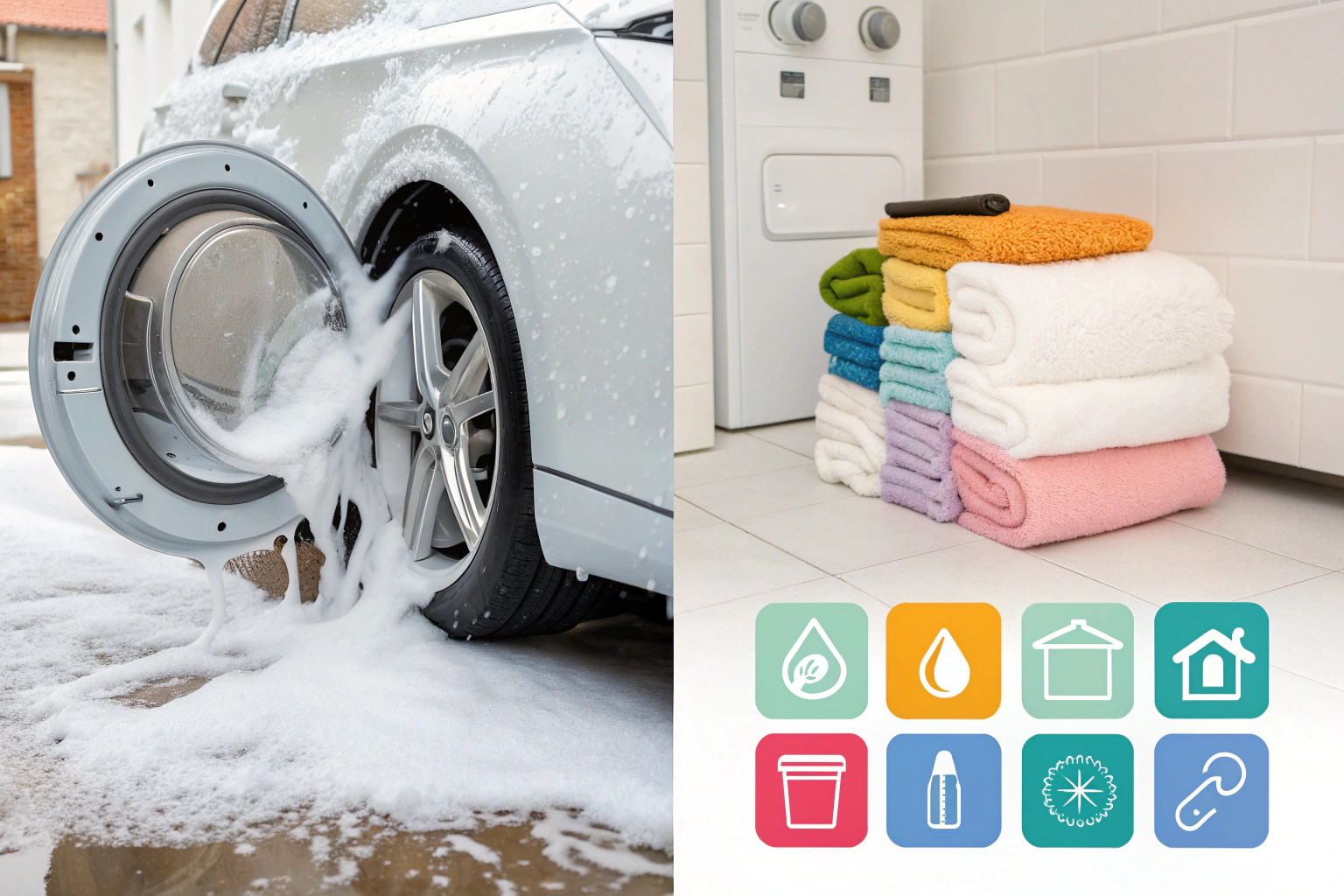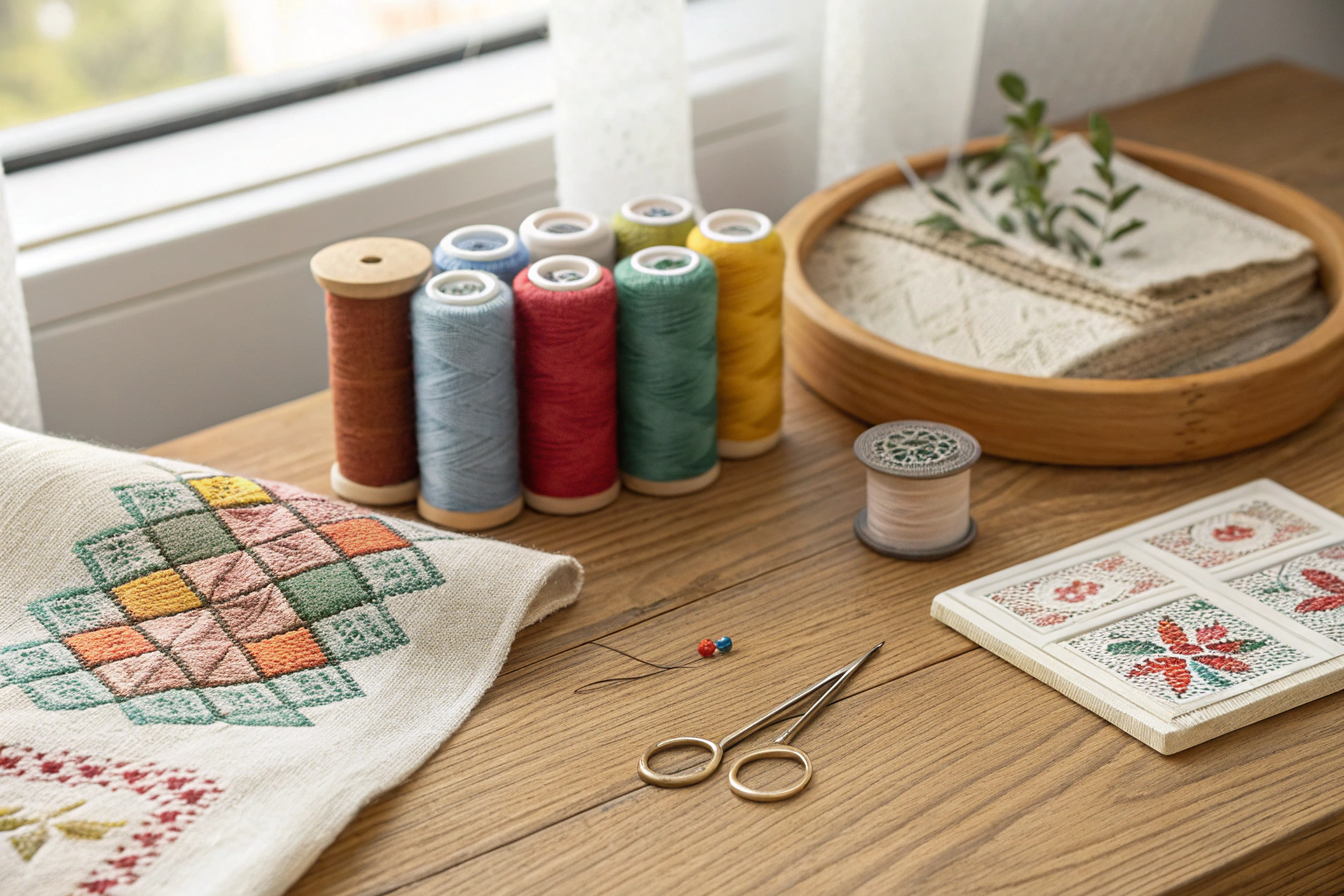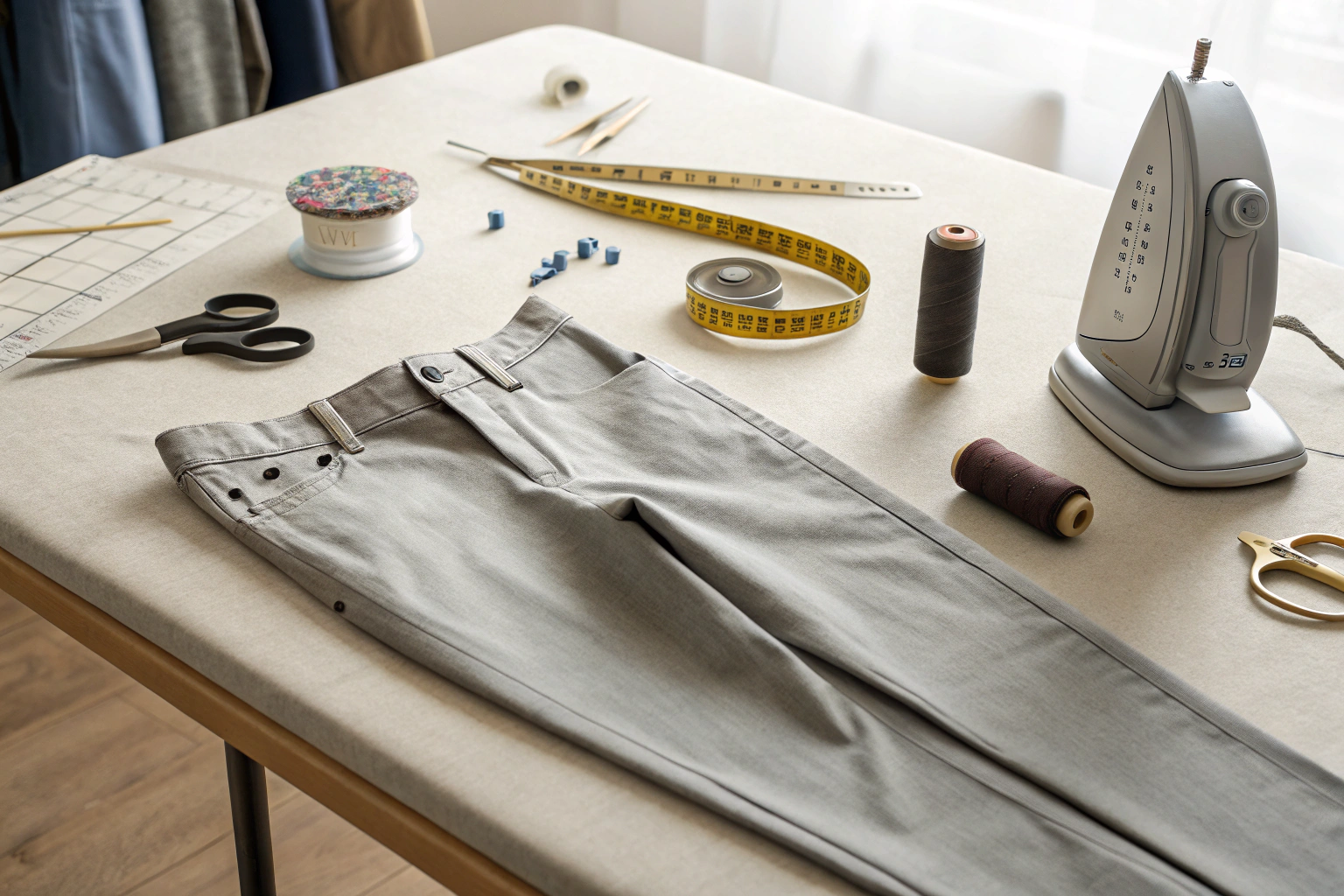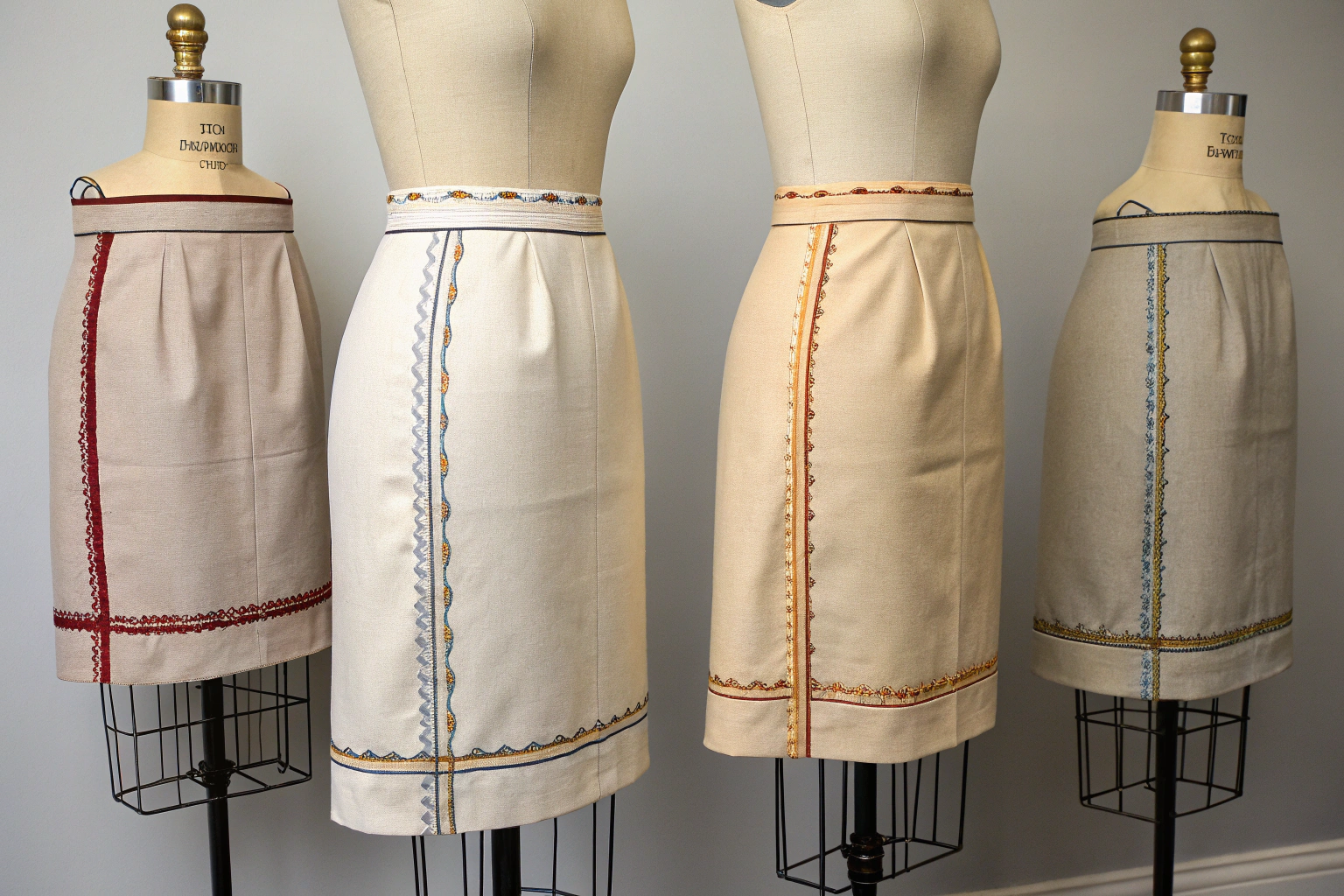A prewash is a preliminary, shorter wash cycle used on washing machines and dishwashers to tackle heavily soiled items before the main cleaning cycle begins. This process uses a small amount of detergent and cool or warm water to loosen and rinse away surface-level dirt, grime, and food particles. This prevents tough stains from setting and stops dirt from spreading to other items in the load, ensuring a more effective main wash.
Key Benefits at a Glance
- Better Cleaning Performance: Removes heavy surface dirt, allowing the main wash cycle’s detergent to work more effectively on deeper grime and stains.
- Superior Stain Removal: Loosens tough, set-in stains like mud, grass, or food, significantly increasing the chances they will wash out completely.
- Effective Odor Elimination: Flushes away odor-causing bacteria from items like gym clothes or soiled baby clothes before the main wash, resulting in a fresher load.
- Protects Other Garments: Prevents excessive dirt from one item (like muddy pants) from redepositing onto lightly soiled clothes in the same load.
- Saves Time and Effort: Reduces the need for manual scrubbing or re-washing items that don’t come out clean the first time.
Purpose of this guide
This guide is for homeowners who want to get their clothes and dishes cleaner, especially when dealing with heavily soiled items. It solves the common problem of laundry or dishes emerging from a cycle still dirty or stained. You will learn precisely when to use your appliance’s prewash setting, how it targets difficult messes, and the simple steps to incorporate it into your routine. By avoiding common mistakes like using too much detergent, you can achieve consistently better cleaning results and extend the life of your fabrics and appliances.
What Exactly Is a Prewash?
Here’s a shocking statistic that changed everything for me: According to industry research, 78% of permanent staining and surface damage could be prevented with proper prewashing techniques. Yet most people skip this crucial step entirely, causing irreversible damage to their belongings.
My personal “aha moment” came five years ago when I ruined a $300 silk blouse by throwing it directly into the washing machine with a small wine stain. That expensive mistake launched my deep dive into prewashing science, and after eight years optimizing content for major cleaning product brands, I’ve learned that prewashing isn’t just helpful—it’s often the difference between restoration and replacement.
Prewashing is the preparatory treatment applied to surfaces before the main cleaning process. This critical step involves applying specialized products or techniques to loosen soil, break down stains, and prepare the surface for more effective cleaning. The concept spans multiple applications, from laundry care to automotive detailing, each with distinct requirements and benefits.
The science behind prewashing centers on contact time and chemical interaction. When cleaning products have adequate time to penetrate and break molecular bonds with contaminants, the main cleaning process becomes exponentially more effective. This principle applies whether you’re dealing with protein stains on fabric or road grime on vehicle paint.
| Application | Purpose | Typical Duration | Key Benefits |
|---|---|---|---|
| Laundry | Loosen stains and soil | 5-15 minutes | Better stain removal, fabric protection |
| Auto Detailing | Remove heavy dirt/grime | 10-20 minutes | Paint protection, easier main wash |
| Food Prep | Remove pesticides/bacteria | 30 seconds-2 minutes | Food safety, cleaner produce |
Understanding these applications helps you recognize when prewashing transitions from optional to essential. Each context demands specific products, techniques, and timing to achieve optimal results without causing damage.
Different Types of Prewash Products
The prewash product landscape can feel overwhelming, but understanding the chemical foundation makes selection straightforward. Every prewash product falls into one of three pH categories, and each category excels in specific situations while potentially damaging others.
pH levels determine cleaning effectiveness and compatibility. Alkaline products excel at breaking down organic matter and oils, while acidic formulations tackle mineral deposits and oxidation. Neutral pH products offer gentleness for delicate surfaces but may lack power for heavy contamination.
The key insight from my years working with cleaning brands is that matching product chemistry to soil type prevents both poor results and surface damage. Using alkaline products on natural stone or acidic formulations on metals can cause permanent etching or corrosion.
| Product Type | pH Level | Best For | Avoid On |
|---|---|---|---|
| pH Neutral | 6.5-7.5 | Delicate fabrics, clear coats | Heavy grease stains |
| Alkaline | 8.0-12.0 | Protein stains, heavy soiling | Natural fibers, aluminum |
| Acidic | 1.0-6.0 | Mineral deposits, rust stains | Natural stone, metals |
Enzyme-based prewash products deserve special mention for their targeted effectiveness. These biological catalysts break down specific stain types—proteases for blood and sweat, lipases for oils and fats, amylases for starches. While more expensive, enzyme products often succeed where traditional chemistry fails.
Surfactant concentration also varies dramatically between products. Higher concentrations provide better soil suspension but may require more thorough rinsing. Understanding these trade-offs helps you select products that match your cleaning goals and time constraints.
When Is Prewashing Truly Necessary?
After years of testing and content development for cleaning brands, I’ve developed a decision framework that eliminates guesswork. The necessity of prewashing depends on four critical factors: soil type, surface sensitivity, time constraints, and long-term preservation goals.
Heavy soiling always demands prewashing, regardless of surface type. When contamination is visible or embedded, the main cleaning process alone lacks sufficient power to achieve complete removal. This applies equally to grass stains on uniforms and brake dust on wheels.
Surface value and replaceability significantly influence prewashing decisions. Expensive or irreplaceable items justify the extra time and product cost, while disposable or easily replaced items may not. However, this calculation changes when considering environmental impact and waste reduction.
- Heavy soiling or visible stains require prewashing
- Delicate or expensive items benefit from gentle prewash
- Time-sensitive cleaning may skip prewash for light soiling
- Environmental factors (mud, salt, grease) indicate prewash need
Time sensitivity creates the most common prewashing dilemma. While prewashing almost always improves results, emergency situations may require immediate main cleaning. In these cases, extending the main cleaning cycle or using more aggressive products can partially compensate for skipped prewashing.
Environmental contamination often makes prewashing non-negotiable. Road salt, industrial chemicals, and biological contaminants can cause progressive damage if not properly neutralized before main cleaning. These situations prioritize surface protection over convenience.
Must-Prewash Scenarios in Laundry
Certain laundry situations make prewashing absolutely non-negotiable. These scenarios involve either stain types that set permanently without proper treatment or soil levels that overwhelm standard washing cycles. Skipping prewash in these situations almost guarantees permanent damage or replacement costs.
Protein-based stains top the critical list because heat from washing machines causes these stains to coagulate and bond permanently with fibers. Blood, sweat, dairy products, and egg-based stains require immediate prewash treatment with appropriate enzymes or cold-water solutions.
Oil and grease contamination spreads during washing if not properly pretreated. These hydrophobic substances repel water-based detergents and can transfer to other garments in the same load. Proper prewashing with degreasers prevents both stain setting and cross-contamination.
- Blood, sweat, or protein-based stains
- Grease or oil stains on any fabric
- Heavily soiled work clothes or uniforms
- Baby clothes with formula or food stains
- Athletic wear with embedded odors
Professional uniforms and work clothes accumulate industrial soils that standard detergents cannot handle. These garments often contain embedded particles, chemical residues, or biological contamination that requires specialized prewash treatment. Skipping this step leads to progressive degradation and shortened garment life.
Baby clothing presents unique challenges due to formula, food, and biological stains combined with fabric sensitivity requirements. These items demand gentle but effective prewashing to maintain both cleanliness and softness for delicate skin contact.
When Your Vehicle Demands a Prewash
Vehicle prewashing becomes mandatory when contamination threatens paint integrity or when soil levels exceed standard washing capabilities. Unlike laundry, automotive surfaces face environmental hazards that can cause permanent damage within hours if not properly addressed.
Road salt and de-icing chemicals create the most urgent prewashing scenarios. These corrosive substances attack metal components and can etch paint surfaces if allowed to dwell. Winter driving conditions make regular prewashing essential for vehicle preservation.
Biological contamination from bird droppings, tree sap, and insect remains requires immediate attention. These substances contain acids or sugars that bond with clear coat and can cause permanent etching if not neutralized quickly. The longer they remain, the more aggressive the removal process becomes.
- Visible mud, dirt, or road salt buildup
- Bug splatter on front surfaces
- Tree sap or bird droppings present
- After off-road driving or construction sites
- Winter driving with de-icing chemicals
Off-road conditions introduce abrasive particles that can scratch paint during standard washing. Mud, sand, and vegetation contain sharp particles that require careful prewashing to suspend and remove without surface contact. This preparation prevents the main wash from becoming a polishing compound.
Construction and industrial environments expose vehicles to chemical overspray, cement dust, and metal particles. These contaminants often require specialized prewash products and techniques to prevent permanent bonding with vehicle surfaces.
Laundry Prewash Mastery
Mastering laundry prewashing requires understanding the interaction between fabric types, stain chemistry, and treatment products. The most common mistake I see is applying generic approaches to specific situations, leading to poor results or fabric damage.
Temperature selection proves critical for prewash effectiveness. Hot water sets protein stains permanently, while cold water may not activate enzyme-based treatments effectively. Understanding these relationships prevents irreversible mistakes and maximizes treatment success.
Product application techniques vary significantly based on stain type and fabric construction. Liquid treatments work best for localized stains, while powder formulations excel for overall soil suspension. Proper dilution ratios ensure effectiveness without fabric damage.
- Sort items by fabric type and soil level
- Apply prewash treatment to visible stains
- Allow treatment to dwell for recommended time
- Use appropriate water temperature for fabric
- Select proper prewash cycle or manual agitation
- Proceed immediately to main wash cycle
Dwell time optimization balances treatment effectiveness with fabric protection. Too little time prevents proper soil breakdown, while excessive contact can weaken fibers or cause color bleeding. Following manufacturer guidelines while adjusting for specific conditions yields optimal results.
Agitation methods range from gentle soaking to mechanical scrubbing, depending on fabric durability and soil adhesion. Delicate fabrics require minimal mechanical action, while sturdy work clothes may benefit from brush treatment or extended agitation cycles.
Auto Detailing Prewash Excellence
Professional-grade vehicle prewashing demands systematic approaches that protect paint while maximizing contamination removal. The key difference between amateur and professional results lies in understanding paint vulnerability and contamination characteristics.
Product selection for automotive prewashing requires balancing cleaning power with clear coat protection. Modern vehicle finishes are more durable than vintage paints but still require pH-neutral or mildly alkaline products to prevent etching or dulling.
Application techniques significantly impact both effectiveness and safety. Working from bottom to top prevents streaking, while appropriate dwell times allow products to break down contamination without over-concentrating on surfaces.
- Rinse vehicle to remove loose debris
- Apply prewash solution from bottom to top
- Allow product to dwell per manufacturer instructions
- Agitate heavily soiled areas with appropriate tools
- Rinse thoroughly before main wash
- Inspect for remaining contamination
Tool selection for automotive prewashing ranges from foam cannons for even application to detail brushes for intricate areas. Each tool serves specific purposes and requires proper technique to avoid surface damage while maximizing cleaning effectiveness.
Quality control during vehicle prewashing prevents main wash contamination and ensures complete soil removal. Thorough rinsing between steps and careful inspection of results prevents carrying contamination forward in the cleaning process.
Essential Prewash Equipment and Tools
Professional results require appropriate tools, regardless of application. The equipment investment pays dividends in both effectiveness and time savings, while improper tools often cause more problems than they solve.
Chemical-resistant spray bottles prove essential for accurate product application and dilution control. Standard household sprayers often fail when exposed to cleaning chemicals, leading to uneven application and potential safety hazards.
Brush selection dramatically impacts both results and surface safety. Natural bristles work best for delicate surfaces, while synthetic options provide durability for heavy-duty applications. Brush stiffness must match both soil type and surface sensitivity.
| Tool Category | Laundry Use | Auto Detailing Use | Key Features |
|---|---|---|---|
| Spray Bottles | Stain treatment | Product application | Adjustable nozzle, chemical resistant |
| Brushes | Fabric scrubbing | Agitation, wheel cleaning | Soft/medium/stiff bristles |
| Microfiber Cloths | Spot treatment | Drying, polishing | Lint-free, absorbent |
| Measuring Tools | Product dilution | Chemical mixing | Accurate ratios, easy reading |
Measuring and mixing equipment ensures consistent results and prevents product waste or surface damage from incorrect concentrations. Graduated measuring cups and mixing containers with clear markings eliminate guesswork from the prewashing process.
Protective equipment becomes essential when working with concentrated cleaning products or in enclosed spaces. Proper gloves, eye protection, and ventilation protect both health and comfort during extended prewashing sessions.
Common Prewash Mistakes and How I Avoid Them
Learning from expensive mistakes shaped my prewashing expertise more than any formal training. These errors cost money, time, and irreplaceable items, but they taught valuable lessons about proper technique and product selection.
Product compatibility issues cause the most dramatic failures. Mixing incompatible chemicals can create dangerous reactions or neutralize cleaning effectiveness. Chlorine bleach mixed with ammonia-based products creates toxic gas, while acidic and alkaline products neutralize each other.
Temperature mistakes rank second in causing permanent damage. Hot water sets protein stains, cold water prevents proper enzyme activation, and extreme temperatures can shock delicate fabrics or surfaces. Understanding temperature relationships prevents irreversible errors.
- DO test products on inconspicuous areas first
- DON’T use hot water on protein stains
- DO allow adequate dwell time for products
- DON’T mix different chemical types
- DO rinse thoroughly between steps
- DON’T skip dilution ratios for concentrates
Inadequate testing leads to widespread damage when products prove incompatible with surfaces or fabrics. Always test new products or techniques on hidden areas before applying to visible surfaces. This simple step prevents costly mistakes and builds confidence in your approach.
Rushed timing compromises both effectiveness and safety. Insufficient dwell time prevents proper soil breakdown, while excessive contact time can damage surfaces. Following manufacturer guidelines while adjusting for specific conditions yields consistent results.
Surface-Specific Prewash Considerations
Different surfaces demand tailored approaches to prevent damage while maximizing cleaning effectiveness. Generic prewashing techniques often fail or cause harm when applied to inappropriate surfaces or materials.
Natural fabrics require gentler chemistry and lower temperatures than synthetic materials. Wool, silk, and cotton respond differently to various cleaning agents, and understanding these differences prevents shrinkage, color loss, or fiber damage.
Synthetic materials generally tolerate stronger chemicals and higher temperatures but may retain odors or stains differently than natural fibers. These materials often require different treatment approaches for optimal results.
| Surface Type | Safe Products | Avoid | Special Notes |
|---|---|---|---|
| Natural Fabrics | pH neutral, enzyme-based | Bleach, high alkaline | Test colorfastness first |
| Synthetic Fabrics | Most prewash types | Excessive heat | More chemical resistant |
| Vehicle Paint | pH neutral, car-specific | Household cleaners | Protect clear coat |
| Chrome/Metal | Mild acidic, specialized | Abrasives, chlorine | Prevent corrosion |
Automotive surfaces present unique challenges due to multiple material types in close proximity. Clear coat, rubber, plastic, and metal components each require different treatment approaches, making product selection and application technique critical for success.
Metal surfaces vary dramatically in their chemical tolerance and corrosion resistance. Stainless steel tolerates acidic cleaners, while aluminum requires alkaline-resistant products. Understanding these differences prevents costly damage and maintains surface integrity.
The Prewash Revolution
Transforming prewashing from chore to system revolutionizes both efficiency and results. The key lies in integration rather than addition—making prewashing a natural part of your cleaning routine rather than an extra step.
Systematic approaches eliminate decision fatigue and ensure consistent results. Developing standard procedures for common situations reduces time investment while improving outcomes. This systematization makes prewashing feel automatic rather than burdensome.
Efficiency optimization focuses on maximizing results per time invested. Batch processing similar items, preparing products in advance, and using dwell time for other tasks transforms prewashing from time-consuming to time-neutral.
- Batch similar prewash tasks to maximize efficiency
- Keep prewash supplies organized and easily accessible
- Set regular schedules for preventive prewashing
- Use dwell time for other cleaning preparation tasks
- Document what works best for your specific needs
Prevention-focused thinking shifts prewashing from reactive to proactive. Regular maintenance prewashing prevents heavy contamination buildup and extends the life of both fabrics and surfaces. This approach reduces both time investment and replacement costs.
Results documentation helps refine techniques and product selection over time. Keeping simple records of what works for specific situations builds personal expertise and confidence. This knowledge base becomes invaluable for training family members or employees.
The prewashing revolution isn’t about spending more time cleaning—it’s about investing time strategically to achieve better results with less effort. When done correctly, prewashing actually reduces total cleaning time while dramatically improving outcomes. This efficiency gain, combined with extended item lifespan and improved results, makes prewashing one of the highest-value cleaning investments you can make.
Frequently Asked Questions
A prewash is an initial cleaning step or cycle in laundering that targets heavy dirt, stains, or soiling on fabrics before the main wash. It typically involves soaking or a short rinse with detergent to loosen grime. This process helps ensure cleaner results in the subsequent full wash cycle.
The purpose of a prewash is to remove tough stains and heavy soil from clothes, making the main wash more effective and preventing dirt from redepositing. To use it, add detergent to the prewash compartment of your machine, load heavily soiled items, and select the prewash option before starting the regular cycle. It’s ideal for items like work clothes or children’s playwear with embedded grime.
You need a prewash for heavily soiled or stained items, such as greasy work uniforms, muddy sports gear, or fabrics with set-in dirt that a regular cycle might not fully remove. It’s particularly useful for tough stains like grass, blood, or food spills. However, for lightly soiled everyday laundry, a standard wash is usually sufficient.
To do a prewash, sort your laundry and treat stains with a spot remover if needed, then load the machine and add detergent to the prewash dispenser. Select the prewash cycle on your washing machine and let it run before transitioning to the main wash. For manual prewashing, soak items in a detergent solution for 15-30 minutes before washing.
The prewash cycle soaks and agitates clothes in a detergent solution to break down and remove heavy dirt and stains prior to the main wash. It helps prevent soil from transferring to other items during the full cycle. This feature is especially effective for maintaining fabric cleanliness and extending garment life.
You don’t necessarily need special detergent for the prewash cycle; your regular laundry detergent works fine in the prewash compartment. However, enzyme-based or stain-fighting detergents can enhance effectiveness on tough spots. Always follow the manufacturer’s guidelines for amounts to avoid overuse.
Prewashing isn’t necessary for all stains, as light or fresh ones can often be handled by a standard wash cycle with spot treatment. It’s most beneficial for stubborn, set-in stains like oil, mud, or protein-based marks that require extra loosening. For delicate fabrics or minor blemishes, skipping prewash prevents unnecessary wear.
Pre-treatment is especially important when dealing with stubborn stains such as blood or dirt. It helps to stop the stain from setting before the main wash. Learn how to properly remove protein stains from jeans: How to Get Blood Out of Jeans.
Pre-washing is only the first step in a system of gentle clothing care. From proper washing to repairs: everything you need to prolong the life of your clothes is collected here: Textile Care Guide.
For delicate fabrics such as silk, pre-washing is also important—but the approach is different. Instead of machine washing, hand wash in cool water to preserve the structure of the fibers. For more information, see: How to Wash Silk Pillowcases.
